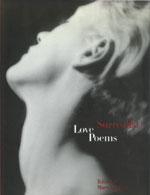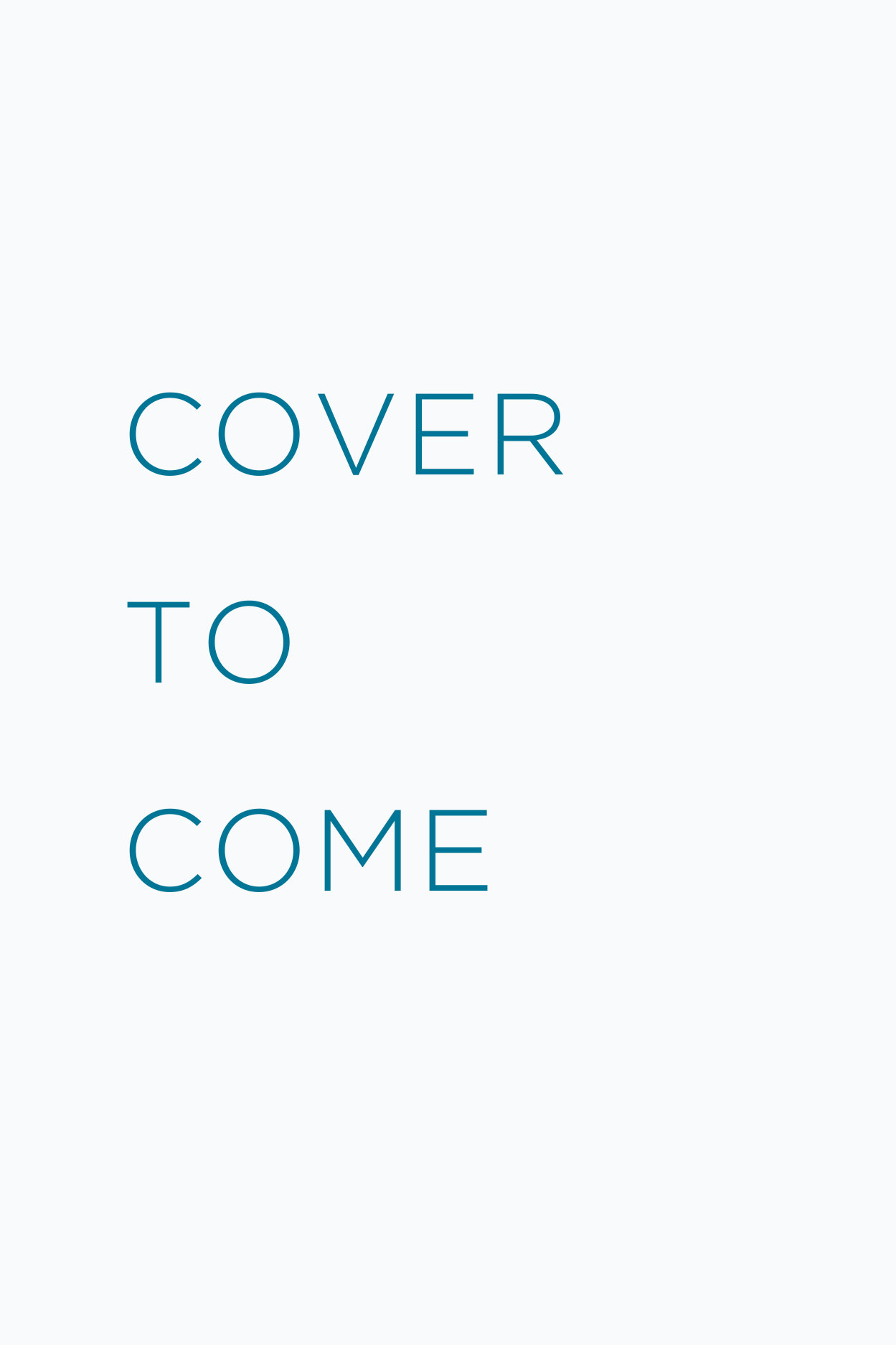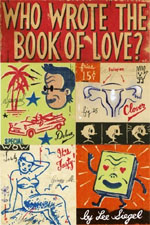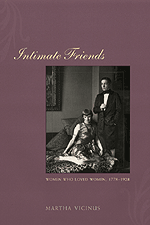Love is in the Air: A Valentine’s Day Reading List
The second week of February offers much to celebrate for the presidential historians and evolution scholars among us. But, in addition to marking the bicentennial of both Abraham Lincoln and Charles Darwin’s birth, this week also has something for the romantics at heart. This Saturday is Valentine’s Day, and, as you are frantically arranging last minute dinner reservations, ordering flowers for your beloved, and selecting decadent chocolates to satisfy his or her sweet tooth, the University of Chicago Press offers this Valentine’s Day reading list that celebrates love in all its forms.
 For the poetry lover, may we suggest the poetry of love of the absurd? Sure, love poetry includes descriptions of the beloved and images of a fantastic idyll complete with falling stars, the sound of the sea, and beautiful countryside. But, in the hands of Surrealists, love poetry also includes gravediggers and murderers, dice and garbage, snakeskin purses and “the drunken kisses of cyclones.” Surrealism, the movement founded in the 1920s on the ashes of Dada’s nihilism, embraced absurdity, contradiction, and, to a supreme extent, passion and desire. From André Breton’s battle cry of “Mad Love” to the quiet lyricism of Robert Desnos, Surrealist writers and artists obsessively expressed the permutations of that fundamental human state, love, and they did so with the vocabulary of the natural and unnatural world, the explicit language of sex, and a great deal of humor.
For the poetry lover, may we suggest the poetry of love of the absurd? Sure, love poetry includes descriptions of the beloved and images of a fantastic idyll complete with falling stars, the sound of the sea, and beautiful countryside. But, in the hands of Surrealists, love poetry also includes gravediggers and murderers, dice and garbage, snakeskin purses and “the drunken kisses of cyclones.” Surrealism, the movement founded in the 1920s on the ashes of Dada’s nihilism, embraced absurdity, contradiction, and, to a supreme extent, passion and desire. From André Breton’s battle cry of “Mad Love” to the quiet lyricism of Robert Desnos, Surrealist writers and artists obsessively expressed the permutations of that fundamental human state, love, and they did so with the vocabulary of the natural and unnatural world, the explicit language of sex, and a great deal of humor.
Editor and translator Mary Ann Caws brings together sixty poems—many of them translated into English for the first time—by Surrealists who charged their work through with all forms of eroticism. Within these pages you will read the magnificent love poems of Desnos, which rank among the greatest in twentieth-century poetry, and hear the voices of lesser known “poets” such as Salvador Dalí and Frida Kahlo. Poems by familiar Surrealists such as Breton, the movement’s leader, and Paul Eluard join work by Octavio Paz and Philippe Soupault. Interspersed with the poetry are photographs by Man Ray, Lee Miller, and Claude Cahun. Surrealist Love Poems seeks to demonstrate the truth of Breton’s words, that “the embrace of poetry like that of bodies/As long as it lasts/Shuts out all the woes of the world.”
Check out three poems from the book. And for more love poetry (and literary criticism thereof), check out Doreen Gildroy’s Human Love and Allen Grossman’s True-Love.
 For those who want to get their love on in prose form and aren’t shy about the more, uh, vulgar aspects of physical romance, look no further than the novels of Lee Siegel. Love in a Dead Language is a love story, a translation of an Indian sex manual, an erotic farce, and a murder mystery rolled into one. Enticing the reader to follow both victims and celebrants of romantic love on their hypertextual voyage of folly and lust-through movie posters, upside-down pages, the Kamasutra: Game of Love board game, and even a proposed CD-ROM, Love in a Dead Language exposes the complicities between the carnal and the intellectual, the erotic and the exotic and, in the end, is an outrageous operatic portrayal of romantic love.
For those who want to get their love on in prose form and aren’t shy about the more, uh, vulgar aspects of physical romance, look no further than the novels of Lee Siegel. Love in a Dead Language is a love story, a translation of an Indian sex manual, an erotic farce, and a murder mystery rolled into one. Enticing the reader to follow both victims and celebrants of romantic love on their hypertextual voyage of folly and lust-through movie posters, upside-down pages, the Kamasutra: Game of Love board game, and even a proposed CD-ROM, Love in a Dead Language exposes the complicities between the carnal and the intellectual, the erotic and the exotic and, in the end, is an outrageous operatic portrayal of romantic love.
 Who Wrote the Book of Love? is a comedic chronicle of the sexual life of an American boy in Southern California in the 1950s. Starting at the beginning of the decade, in the year that Stalin announced that the Soviet Union had developed an atomic bomb, the book opens with a child’s first memory of himself. Closing at the end of the decade, when Pat Boone’s guide to dating, ‘Twixt Twelve and Twenty, topped the bestseller list, the book culminates just moments before the boy experiences for the first time what he had learned from a book read to him by his mother was called “coitus or sexual intercourse or sometimes, less formally, just making love.” Between the initial overwhelmingly erotic recollection and the final climactic moment, all is sex—beguiling and intractable, naughty and sweet. Who Wrote the Book of Love? is about the subversive sexual imaginations of children. And, as such, it is about the origins of love.
Who Wrote the Book of Love? is a comedic chronicle of the sexual life of an American boy in Southern California in the 1950s. Starting at the beginning of the decade, in the year that Stalin announced that the Soviet Union had developed an atomic bomb, the book opens with a child’s first memory of himself. Closing at the end of the decade, when Pat Boone’s guide to dating, ‘Twixt Twelve and Twenty, topped the bestseller list, the book culminates just moments before the boy experiences for the first time what he had learned from a book read to him by his mother was called “coitus or sexual intercourse or sometimes, less formally, just making love.” Between the initial overwhelmingly erotic recollection and the final climactic moment, all is sex—beguiling and intractable, naughty and sweet. Who Wrote the Book of Love? is about the subversive sexual imaginations of children. And, as such, it is about the origins of love.
 In Love and the Incredibly Old Man, a professor and novelist named Lee Siegel finds himself in Eagle Springs, Florida, attempting to give form to the life of an elderly, irascible, conquistador-costumed man claiming to be the 540-year-old Juan Ponce de León. Spending humid days listening to the romantic ramblings of the old man and sleepless nights doubting yet trying to craft these reminiscences into a narrative that will satisfy the literary aspirations of his subject, Siegel the ghostwriter spins an improbable tale filled with Native Americans, insatiable monarchs, philandering cantors, deliriously passionate nuns, delicate actresses, androgynous artists, and deceptions small and large. For de León, and for Siegel too, centuries of conquest and colonialism, fortune and identity, are all refracted through the memories of the conquistador’s lovers, each and every one of them adored “more than any other woman ever.”
In Love and the Incredibly Old Man, a professor and novelist named Lee Siegel finds himself in Eagle Springs, Florida, attempting to give form to the life of an elderly, irascible, conquistador-costumed man claiming to be the 540-year-old Juan Ponce de León. Spending humid days listening to the romantic ramblings of the old man and sleepless nights doubting yet trying to craft these reminiscences into a narrative that will satisfy the literary aspirations of his subject, Siegel the ghostwriter spins an improbable tale filled with Native Americans, insatiable monarchs, philandering cantors, deliriously passionate nuns, delicate actresses, androgynous artists, and deceptions small and large. For de León, and for Siegel too, centuries of conquest and colonialism, fortune and identity, are all refracted through the memories of the conquistador’s lovers, each and every one of them adored “more than any other woman ever.”
To ready yourself for romance, read excerpts from Siegel’s Love in a Dead Language, Who Wrote the Book of Love?, and Love and the Incredibly Old Man.
 For the old marrieds (or chronic cohabitators) among us, Marriage and Cohabitation is a window into modern unions. In an era when half of marriages end in divorce, cohabitation has become more commonplace and those who do get married are doing so at an older age. So why do people marry when they do? And why do some couples choose to cohabit?
For the old marrieds (or chronic cohabitators) among us, Marriage and Cohabitation is a window into modern unions. In an era when half of marriages end in divorce, cohabitation has become more commonplace and those who do get married are doing so at an older age. So why do people marry when they do? And why do some couples choose to cohabit?
Situating their argument in the context of the Western world’s 500-year history of marriage, the authors reveal what factors encourage marriage and cohabitation in a contemporary society where the end of adolescence is no longer signaled by entry into the marital home. While some people still choose to marry young, others elect to cohabit with varying degrees of commitment or intentions of eventual marriage. The authors’ controversial findings suggest that family history, religious affiliation, values, projected education, lifetime earnings, and career aspirations all tip the scales in favor of either cohabitation or marriage.
For other takes on marriage—in all its forms—check out our full subject list.
 For those who enjoy receiving fresh blossoms on Valentine’s Day, perhaps a primer on the history of flowers is in order? In Flower Chronicles, E. Buckner Hollingsworth draws on folklore, poetry, annals of medicine, and gardening manuals to report essential historical information on the domestication of garden favorites before they were grown as ornamental plants. Organized by species, Flower Chronicles brims with literary and historical references, anecdotes, and digressions on the lives of merchants, housewives, perfumers, and surgeons.
For those who enjoy receiving fresh blossoms on Valentine’s Day, perhaps a primer on the history of flowers is in order? In Flower Chronicles, E. Buckner Hollingsworth draws on folklore, poetry, annals of medicine, and gardening manuals to report essential historical information on the domestication of garden favorites before they were grown as ornamental plants. Organized by species, Flower Chronicles brims with literary and historical references, anecdotes, and digressions on the lives of merchants, housewives, perfumers, and surgeons.
If Hollingsworth leaves you eager for more botanical books, try The Rose’s Kiss and Wily Violets and Underground Orchids, both by Peter Bernhardt.
 And finally, lest the Press be accused of having a hetero bias, we offer books on love that transcends genders. In Love Stories: Sex between Men before Homosexuality, Jonathan Ned Katz presents stories of men’s intimacies with men during the nineteenth century—including those of Abraham Lincoln—drawing flesh-and-blood portraits of intimate friendships and the ways in which men struggled to name, define, and defend their sexual feelings for one another. In a world before “gay” and “straight” referred to sexuality, men like Walt Whitman and John Addington Symonds created new ways to name and conceive of their erotic relationships with other men. Katz, diving into history through diaries, letters, newspapers, and poems, offers us a clearer picture than ever before of how men navigated the uncharted territory of male-male desire.
And finally, lest the Press be accused of having a hetero bias, we offer books on love that transcends genders. In Love Stories: Sex between Men before Homosexuality, Jonathan Ned Katz presents stories of men’s intimacies with men during the nineteenth century—including those of Abraham Lincoln—drawing flesh-and-blood portraits of intimate friendships and the ways in which men struggled to name, define, and defend their sexual feelings for one another. In a world before “gay” and “straight” referred to sexuality, men like Walt Whitman and John Addington Symonds created new ways to name and conceive of their erotic relationships with other men. Katz, diving into history through diaries, letters, newspapers, and poems, offers us a clearer picture than ever before of how men navigated the uncharted territory of male-male desire.

For the ladies, Intimate Friends offers a fascinating look at the erotic friendships of educated English and American women over a 150-year period, culminating in the 1928 publication of The Well of Loneliness, Radclyffe Hall’s scandalous novel of lesbian love. Martha Vicinus explores all-female communities, husband-wife couples, liaisons between younger and older women, female rakes, and mother-daughter affection. Women, she reveals, drew upon a rich religious vocabulary to describe elusive and complex erotic feelings. In vivid and colorful prose, Intimate Friends offers a remarkable picture of women navigating the uncharted territory of same-sex desire.
For more on homosexual love, check out our full list of titles in gay and lesbian studies.
Will you be the University of Chicago Press’s valentine?